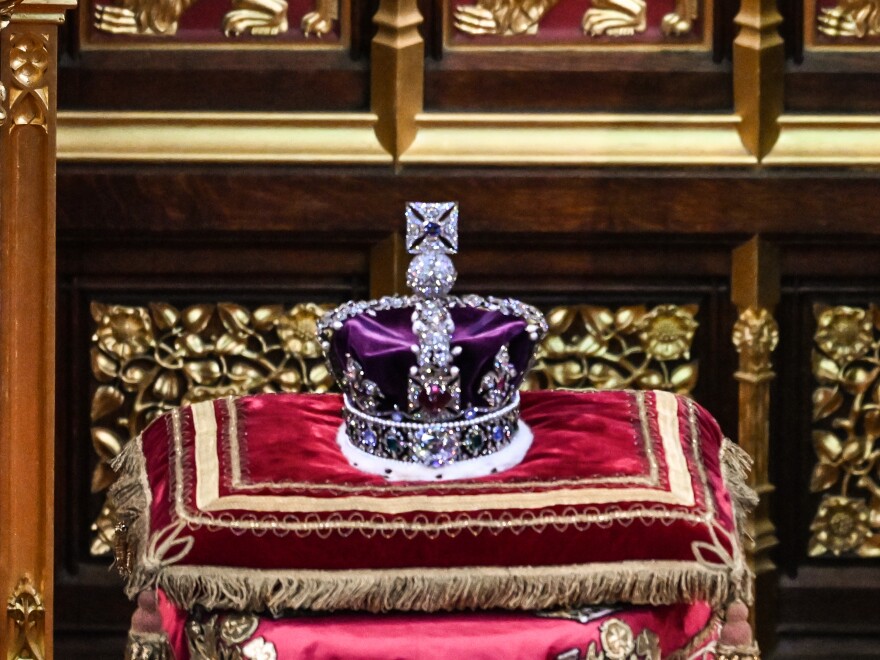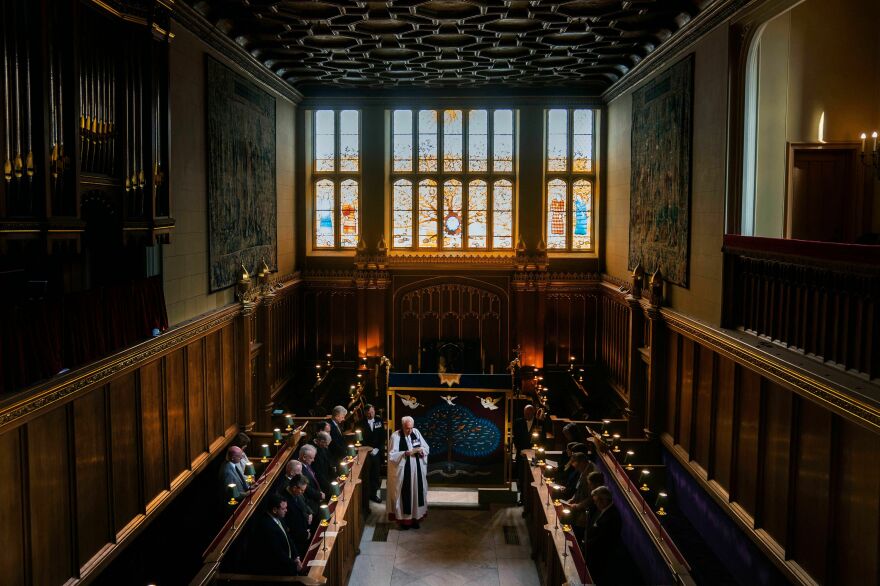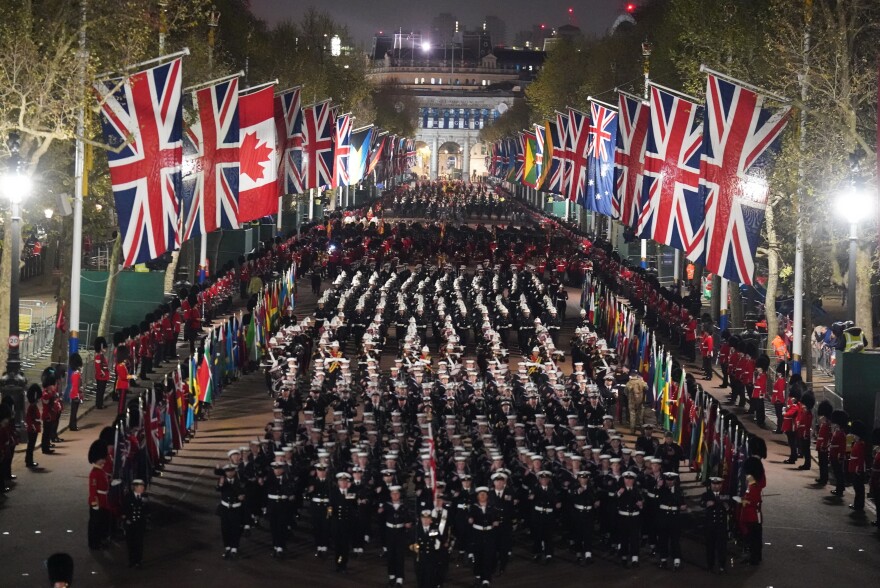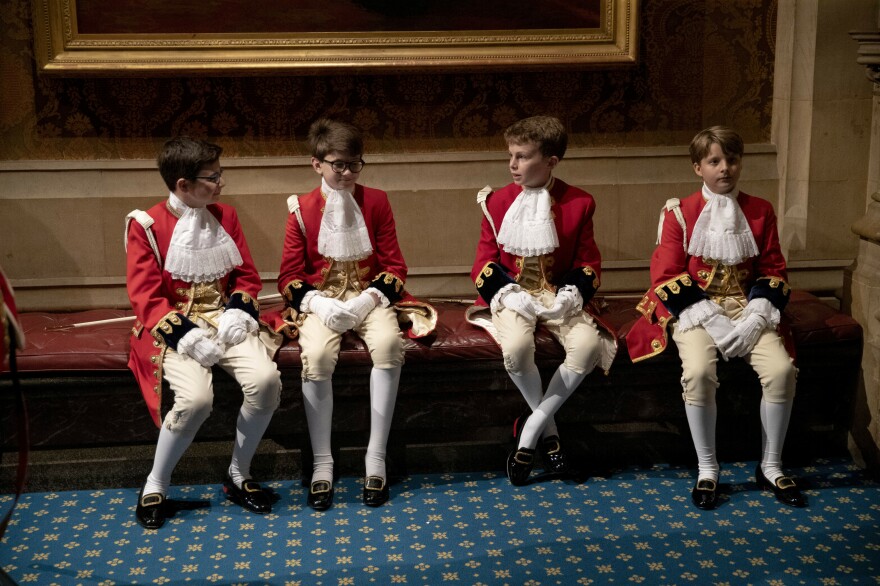LONDON ŌĆ� Pomp and pageantry? Check. Flag-waving tourists? Check. A modern monarchy able to revamp a medieval ritual into something accessible to a younger, more diverse United Kingdom? Maybe.
King Charles III's coronation Saturday will have a shorter parade route, a role for all Britons rather than only aristocrats ŌĆ� and a nod to the country's myriad faiths.
It's also likely to have protesters upset about the more than for U.K. taxpayers during a painful cost-of-living crisis.
And it might rain.
Here are 10 sights you'll see at this weekend's coronation ŌĆ� and two you likely won't.
What you will see
1) Crowns, obviously

King Charles will be crowned with , named for the last Anglo-Saxon king of England, Edward the Confessor. He lived in the 11th century, but the crown was made some 600 years later in 1661, for King Charles II.
It's solid gold, a foot tall, capped with velvet, lined with ermine and encrusted with rubies, amethysts, sapphires, topazes, tourmalines and a garnet. It's heavy ŌĆ� nearly 5 pounds. "It weighs a ton!" the late Queen Elizabeth II, who wore the St. Edward's Crown for her 1953 coronation.
It's worn only a short time by British monarchs at their coronations. It'll be in use for about an hour on Saturday and then be put back into storage at the Tower of London.
But it may be the most recognizable of the royals' many crowns: Its silhouette is, police badges and mailboxes.
Charles has a "working crown" to wear on his way out of Westminster Abbey: the , made in 1937. The monarch wears this crown to the opening of Parliament too. It's one of as many as seven crowns that may grace the king's head.

Camilla, the queen consort, will be crowned with a newly remodeled version of , originally made in 1911. It has a silver frame, lined with gold, and is covered with 2,200 diamonds (minus ; scroll down for more on that). It's smaller and lighter, weighing only a little over a pound.
2) Regalia ŌĆ� royal bling
The is a selection of sacred and secular items that hold for the monarchy. It includes orbs, scepters, swords and rings, which are all part of Britain's famous .
The king will hold the Sovereign's Orb in his right hand during the service. It's a 17th-century golden sphere adorned with precious jewels and a cross on top, meant to represent the Christian world. Charles will also be presented with two scepters during his coronation: Both are golden rods. One is known as the Sovereign's Sceptre with Cross. It features a heart-shaped diamond nestled below a cross, symbolizing power and justice. The other features a dove and is known as the Rod of Equity and Mercy.
While the United Kingdom isn't the only European country to have a royal family, its royals are the . Other monarchies, such as and the Netherlands, have regalia on display but don't use it in ceremonies.
3) Key moment: the anointing

After a procession into Westminster Abbey and presentation of the regalia, the more than 1,000-year-old coronation ceremony will get underway. First, the public ŌĆ� even people watching on TV from home ŌĆ� will be to King Charles. There may be trumpets and exclamations of "God save the king!" (In past coronations, it was only the aristocrats in the room who were asked to do this.)
Then the monarch puts his hand on a Bible and to uphold the law and be a "faithful Protestant." (In addition to being Britain's head of state, he's also the head of the Church of England.)
After the oath, the king's will be removed, and he'll sit on an ancient wooden chair in front of a high altar. (Fun facts: The BBCthe oldest piece of furniture still used for its original purpose in the U.K. And even though it has been refurbished over the centuries, the , including this cheeky carving: "P. Abbott slept in this chair 5-6 July 1800.")
What happens next is the absolute heart of the ancient rite: the anointing.
"It all culminates in the crown, but that can only happen because he has been anointed with holy oil," says , a historian of monarchy at England's University of Southampton. "That's the moment when the monarch is understood to actually become king. Something changes at that moment."
The archbishop of Canterbury will pour consecrated oil from a into a . The oil is harvested from the Mount of Olives in Jerusalem. (This time it's vegan, but in past coronations it contained additives from the glands of small mammals and the intestines of whales.)
"He'll be anointed probably in three places ŌĆ� hands, breast and head," Hunt explains. "It's the most important part and also the most provocative. Even monarchs have said, 'What happens to me when I'm anointed?'"
But it's a secret religious rite that has . There has been lots of speculation about whether that might change this time around. But a has been prepared to shield it from view, as at past coronations.
4) Thousands of guests, some controversial

More than have to the ceremony inside Westminster Abbey. (That's down from more than 8,000 people invited to Elizabeth's 1953 coronation.) The guest list includes representatives from more than 200 countries ŌĆ� , but not her husband ŌĆ� and as many as 100 heads of state.
No U.S. president has ever attended a U.K. coronation. For centuries, no other crowned royals did either. The ceremony was supposed to be between a monarch and his or her people. But in a break with tradition, Charles has .
In a move that might anger some China hawks, Chinese Vice President is also attending. Han was the architect of Beijing's 2019 crackdown on pro-democracy protesters in Hong Kong.
Another guest shows how much times have changed: Michelle O'Neill, the . The party is linked to the Irish Republican Army, a paramilitary group that used a bomb to kill King Charles' grand-uncle, Lord Louis Mountbatten, in 1979. It has been ended decades of violence and affirmed Northern Ireland as part of the U.K. Sinn Fein recently in the Northern Ireland Assembly.
5) Parade ŌĆ� rain or shine! But

Charles has opted for a shorter parade route than his mother did, and a.
Still, the British military more than 6,000 members of its personnel will take part ŌĆ� making this its biggest ceremonial operation in 70 years. To prepare, they've been all week.
Up in front will be the , which contains two small shards of wood from what some believe was the original cross on which Jesus was crucified. But in a nod to modern Britain's myriad faiths, the procession will also include leaders of Jewish, Hindu, Sikh, Muslim and Buddhist groups. They'll deliver a greeting to the king in unison.
Charles and Camilla will depart Buckingham Palace in the Diamond Jubilee State Coach ŌĆ� which looks ancient but is actually only 10 years old. It's pulled by horses but also has electric windows, air conditioning and hydraulic stabilizers to prevent it from swaying.
They'll make their way along The Mall ŌĆ� a ceremonial promenade, not a shopping center ŌĆ� to Trafalgar Square and then past the Whitehall government buildings and Parliament to Westminster Abbey. Thousands or possibly millions will likely line the nearly 1.5-mile route.
After the ceremony, they'll reverse direction and return along the same path, but in a different carriage, the . It's encrusted in gold leaf and is so heavy, weighing more than 4 tons, that it needs eight horses to pull it and can still move only at a walking pace.
If all goes well, the parade will end with a military flyover and royal wave from the Buckingham Palace balcony.
6) Protesters

The anti-monarchy group Republic says it's in Trafalgar Square, around a statue of King Charles I ŌĆ� who was .
"It's time to get rid of the monarchy," Graham Smith, Republic's leader, told NPR. "We will be chanting, 'Not my king!' when Charles goes past."
On Wednesday, ahead of the coronation, U.K. authorities imposed the , which makes it a criminal offense to disrupt public transit or lock oneself to landmarks, as well as increases police powers to search suspects and seize property.
But the government's security chief coronation protesters will be allowed along the parade route.
7) Page boys ŌĆ� but apparently no page girls

The king's grandson Prince George will be among the at Westminster Abbey. George ŌĆ� who is second in line to the throne ŌĆ� is believed to be the youngest future king to play an official role at a coronation. He may help carry the regalia into Westminster Abbey, ahead of the king.
In a break with tradition, some of Camilla's grandchildren ŌĆ� who are not strictly royals ŌĆ� will also play a role in a ceremony, possibly in holding a canopy over the queen consort during her anointing. Camilla's grandsons, Louis, Gus and Freddy, will take part, as well as her grandnephew Arthur Elliot.
Some British media outlets that it was Camilla's wish for all her grandchildren ŌĆ� including the girls ŌĆ� to play a role in the ceremony. But later reports list only the boys.
These are Camilla's grandchildren through her first marriage, to Andrew Parker Bowles. So a blended family will be on display at the heart of Britain's monarchy.
8) New tunes, and a few celebs

commissioned and composed for the coronation will debut during the ceremony Saturday. They include six pieces for orchestra, five choral works and a piece for the organ. Plus a new by Andrew Lloyd Webber, the man behind popular musicals Cats and The Phantom of the Opera.
In a nod to Charles' late father, Prince Philip, who had Greek heritage, the Byzantine Chant Ensemble will during the presentation of regalia.
A gospel choir will also perform.
And for the first time at any coronation, girl choristers from around the U.K. will sing alongside the legendary boy sopranos of the .
"There's some symbolic resonance in bringing in girls to sing in this space that is really sort of at the heart of the monarchy," says Rebekah Peeples, a sociologist at Princeton University who is writing a book about all-boy choirs. "These are groups that were born in a history of exclusion, because girls and women couldn't sing in public for centuries."
It's not just professional musicians getting involved either.
The ŌĆ� a virtual group of singers who came together online during the COVID-19 pandemic ŌĆ� has made a recording of the "Hallelujah" chorus from Handel's Messiah to commemorate Charles' coronation.
Hundreds of singers in dozens of countries recorded themselves on their cellphones, and the choir's producers mixed their voices together. They'll post the final product Friday night.
Then on Sunday, the will take place at Windsor Castle, with a lineup including singers and American Idol judges and ; U.K. acts like Take That, Freya Ridings and Alexis Ffrench; and Italian tenor .
9) Commonwealth countries

Charles isn't just the king of the U.K.'s four constituent countries, England, Scotland, Wales and Northern Ireland. He's also the head of state of 14 Commonwealth countries. They include Canada, Australia, New Zealand and several island nations in the Caribbean and Pacific.
And he's the ceremonial leader of what's known as the Commonwealth, a of more than 50 independent member states, many of which were once part of the British Empire but no longer retain Britain's monarch as their head of state. Today the organization holds sporting competitions and is a tool of Britain's soft power to .
Leaders, representatives and members of the armed forces of some Commonwealth countries will be seen on Saturday. They will display their countries' flags and represent "the diversity and traditions of the UK and Commonwealth Armed Forces," the says.
Even though much of the Commonwealth will be present in some form at the ceremony, some members in recent years have sought to become republics. In 2021, removed Queen Elizabeth II as its head of state and replaced her with a president. Jamaica is . It's unclear whether either country is sending a representative to Charles' coronation.
10) Quirky merch

Alongside the regular Union Jack-themed knickknacks, London's street vendors are also selling mugs, flags, plates and thimbles with King Charles' face on them. Royal superfans are even making their , from "Coronation Flakes" cereal to King Charles-themed tea cozies. Nespresso has called Jewels of Nespresso to commemorate the event.
Not all the swag is meant to be a celebration of King Charles though. There's coronation toilet paper, and other items with caricatures of Charles.
With the U.K.'s , retailers and hoteliers are hoping the coronation brings a much-needed boost.
It's a mixed bag for the souvenir vendors so far. Some along Regent and Oxford streets in central London told NPR they're barely selling any of the coronation-themed merchandise they've stocked. But Fernando Santos, working at a kiosk opposite Big Ben, says his sales have picked up.
"Today I'm selling mugs and flags ŌĆ� 100 pieces today," he said. "King Charles is very good for my business."
Two sights you won't see
1) Meghan, Duchess of Sussex

She has a prior engagement with a 4-year-old.
After much speculation, last month that Prince Harry will attend his father's coronation but his wife, Meghan, Duchess of Sussex, will not. The couple lives in California, and Saturday is also the fourth birthday of their son, Prince Archie.
There has been a very public rift between the couple and the rest of the royal family in recent years. In January, Harry released a memoir called in which he detailed a physical altercation with his brother, Prince William. Last year, the couple also made a that claims the royal family did not defend them when they were attacked in the press.
2) The Kohinoor diamond

One of the most glittering of the Crown Jewels is a 105-carat diamond originally found in India some 800 years ago. Over the centuries, it passed through Mughal, Persian and Afghan hands before being taken from a 10-year-old Sikh prince and given to Queen Victoria.
Legend holds that calamity befalls any male monarch who wears the Kohinoor, which means "mountain of light" in Persian. So it's normally worn by queen consorts ŌĆ� in their coronation crowns. Tradition holds that Camilla would wear it Saturday.
Except India wants it back. So do other countries whose rulers once had it. Even the Taliban claim it's theirs.
So for now, the royals have decided to keep the Kohinoor on display in the Tower of London ŌĆ� a giant, sparkling reminder of imperial plunder that's too sensitive to parade around.
Copyright 2023 NPR. To see more, visit https://www.npr.org. 9(MDIxMDkyNjUxMDE0NDY1Njg1NzRiOTRiYQ000))






